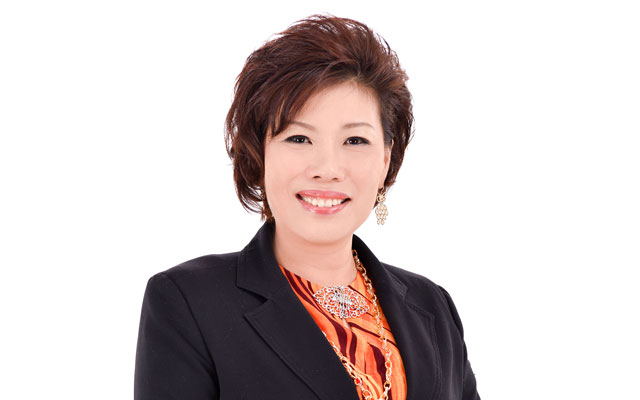Hosting the 5th International Peat Congress in Malaysia will not only educate global peers on Asian tropical peatland, but also inspire members to take a stronger interest in the Malaysian Peat Society’s activities and learn how to run an international event, says congress general Lulie Melling
Having been with the Malaysian Peat Society for years now and as president at one point, what would you say is the biggest challenge for the association?
Malaysians in general don’t make good society members. Many have problems paying the annual subscription which, by the way, is very nominal. It is all about their attitude. Many think what can the society do for me, rather than what can I do for the society.

So what does the society do to keep its members interested?
We organise activities such as conferences and workshops that add value to our members’ work and to the companies and organisations they belong to.
In 2007, I organised a peat conference in Mukah (a coastal town in Sarawak, Malaysia) and a year later in Sibu (a town in Sarawak) that drew a crowd of between 700 to 800 people. Researchers, academicians, policymakers – basically people in the industry – were keen to attend to learn about new science.
What’s being done to groom fresh blood to take over leadership in the society?
Here, grooming is all hands-on. When people are active in the society and want to participate in our activities, it shows that they are interested and keen to see the society grow further (and contribute to the well-being of the larger community). Organising the 15th International Peat Congress provides wonderful exposure for our members on how to organise an international congress.
Can you give an example of how your society has contributed to the well-being of the local community at large?
We have been communicating the benefits of peat compaction to prevent the occurrence of peat fire since 2007. Did you know that in 2015 Sarawak didn’t have any peat fires despite the El Niño weather condition? This was due to the successful communication of peat science to the farmers, planters, plantation owners and policymakers.
What more do you wish for your society?
I wish that more government bodies will provide us with funding to run activities and create better awareness among the public on what tropical peat is and its importance. At the same time, I hope there can be more scholarships to encourage young Malaysians to conduct research on peat management.
Let’s talk about the congress. What made you bid for this event?
There has been a gap in the understanding of what tropical peatland is. Available literature on tropical peat is still very limited compared to both boreal and temperate peat. That has led to a lot of confusion. It is about time that the world, especially countries outside of South-east Asia, learn about and understand tropical peatland.
At the same time, the congress presents an opportunity for both Malaysia and Indonesia to share their experience of having temperate and boreal peat. This is why the congress is being organised with the support of the Indonesian Peat Society – the first time such an arrangement is made for the congress.
The congress will be held in South-east Asia for the first time. How will the region benefit from it?
Previous congresses were always in Europe and the US, and the downside of that was the prohibitive costs of attendance, especially for those from developing nations in Asia.
Having the next edition in Malaysia is very important for both Malaysians and Asians in general, as it will allow more delegates from this part of the world to join in and benefit from scientific, industrial and governmental discussions.
Asians will not have to spend a lot on travel in order to participate in an international congress and learn from leading authorities in the field as well as gain knowledge on temperate and boreal peat, especially in relation to sustainability issues.
Do you expect a record attendance from South-east Asia then, compared with previous congresses?
Yes, also because of our close collaboration with the Indonesian Peat Society. Historically, previous congresses attract less than 20 participants from Asia, while the big numbers are from Europe and North America. We expect the reverse this year.
How many delegates are you expecting?
We are looking at not less than 1,000 delegates. We expect at least half to be from Asia.
What did the Malaysian Peat Society have to do to convince the International Peatland Society that Malaysia was ready to host the congress this year?
We had to prepare a budget to show that we are able to host the congress and ensure that we have the infrastructure (for all the activities) and interesting programmes for delegates.
What do you think won Malaysia the bid?
I think it was my very successful past record in organising peat conferences that the International Peat Society saw a window of opportunity to have the congress hosted in South-east Asia. They were confident that we would do a good job of organising the event and managing the costs.
But why Sarawak, which isn’t usually the first destination to come to mind for association meetings in Malaysia?
More than 60 per cent of Malaysian peat is located in the state of Sarawak. Also, it’s an opportunity for Sarawak to showcase the success story of its peatland development.
Will air connectivity will be an issue for international delegates?
It shouldn’t be an issue because delegates can come via Kuala Lumpur and Singapore. Depending on travel budget, delegates also have a choice of flying with full service or low-cost airlines.
An enticing programme is ultimately the key to attracting international delegates. So what’s in store?
There will be experts speaking about various aspects related to the theme, Peatlands in Harmony – Agriculture, Industry & Nature. For example, Mark E Harrison of Orangutan Tropical Peatland Trust and University of Leicester in the UK and Jack O Rieley of the International Peat Society will be sharing their findings on tropical peatland in Borneo and Sumatra and highlighting the existing threats, advances in biodiversity and conservation efforts.
There will be a session devoted to the exchange of research methods and results on peatland carbon storage and management where the US experience will be shared.
Dominic Ong of Swinburne University of Technology, Sarawak will conduct a session on soft soil engineering, focusing on characterisation and engineering behaviour, construction challenges and sustainable treatments, material performance, recent advances in research and government initiatives and policies.
We will have field excursions to see how Malaysia manages its peat lands, including visits to small-holder oil palm estates, oil palm plantations and pineapple gardens. Delegates will also get a chance to visit the Tropical Peat Swamp Forest which has an Orang Utan habitat.
We will also be playing up the idea of exotic and mysterious Borneo during the gala dinner which will bear the theme, Jungles of Borneo.
What challenges do you face in organising this congress?
It is hard to find quality local speakers who can do compelling presentations in English, and to secure enough local manpower and talents who are interested in organising the congress. These are common challenges all local associations face, in my opinion.
Scientific conferences are usually dry. As a speaker in previous conferences, I have used language that is (sexually)suggestive when I communicate my scientific findings with the plantation sector in order to make science easier to understand and remember.
I first dabbled with humour to get my point across in 2007, when I organised a soil science seminar entitled, Big hole, small hole & KY Jelly, which was well received among local oil palm planters and CEOs of plantation companies from Singapore and Indonesia.
A year later, I organised a seminar entitled, I’ll show you how to use your holes, which received an audience of close to 800 people who were interested in learning how to manage the water table and nutrient supplements in a variety of tropical peat types.
Today, my catchphrase to researchers and plantation owners is “keep it tight and moist”, which is valuable advice for preventing plantations and peatlands from going up in flames during extreme dry weather.
What sort of support did you get from the Sarawak Convention Bureau?
The bureau gave us funding support for travel to bid for the congress and for delegate promotion. It also assisted us in bringing keynote speakers to Sarawak and hosting them.
What is next for you, after this congress is over?
I hope to be able to activate more international research collaboration on tropical peatland. Actually, with the recent ecological disaster in Indonesia – both the forest and peat fires and the resulting haze issue – a lot of parties plan to use this congress as a platform for building discussion and collaboration on the way forward on restoration of the degraded tropical peatland.
A committed individual
- Lulie Melling is heavily involved in the peat industry. She is the director of Tropical Peat Research Laboratory Unit of Sarawak Chief Minister’s Department, the technical advisor for Sarawak State Government in the Malaysian National Action Plan for Peatland, a member of the Greenhouse Gas Working Group 1 for the Roundtable of Sustainable Palm Oil, the treasurer of the Malaysian Peat Society, and a member of the International Peat Society.

-
Melling is renowned among peat researchers for having pioneered the profile verification for tropical peat in 2007.
-
She has contributed to the sustainable development and conservation of peatlands in Sarawak through major research activities funded by both the federal and Sarawak State government.
-
She had participated in a few international funded peat research projects such as the Loagan Bunut National Park Peat and Greenhouse Gas Study by United Nations Development Programme and the Joint Working Group Malaysia-The Netherlands Development and Management of Maludam National Park Peat Soil Study.
-
She has co-authored more than 100 research materials on diverse topics.
-
She has received numerous awards and these include: Star Hornbill award by the Sarawak State Government in 2013; Anak Sarawak Outstanding Achievement Award by the Sarawak Convention Bureau in 2012; Excellent Service Award by the Chief Minister’s Department in 2011.
-
Her achivements also won her the Most Inspiring Woman Award by Malaysian Women’s Weekly Magazine in conjunction with Great Women of Our Time Awards 2012.











